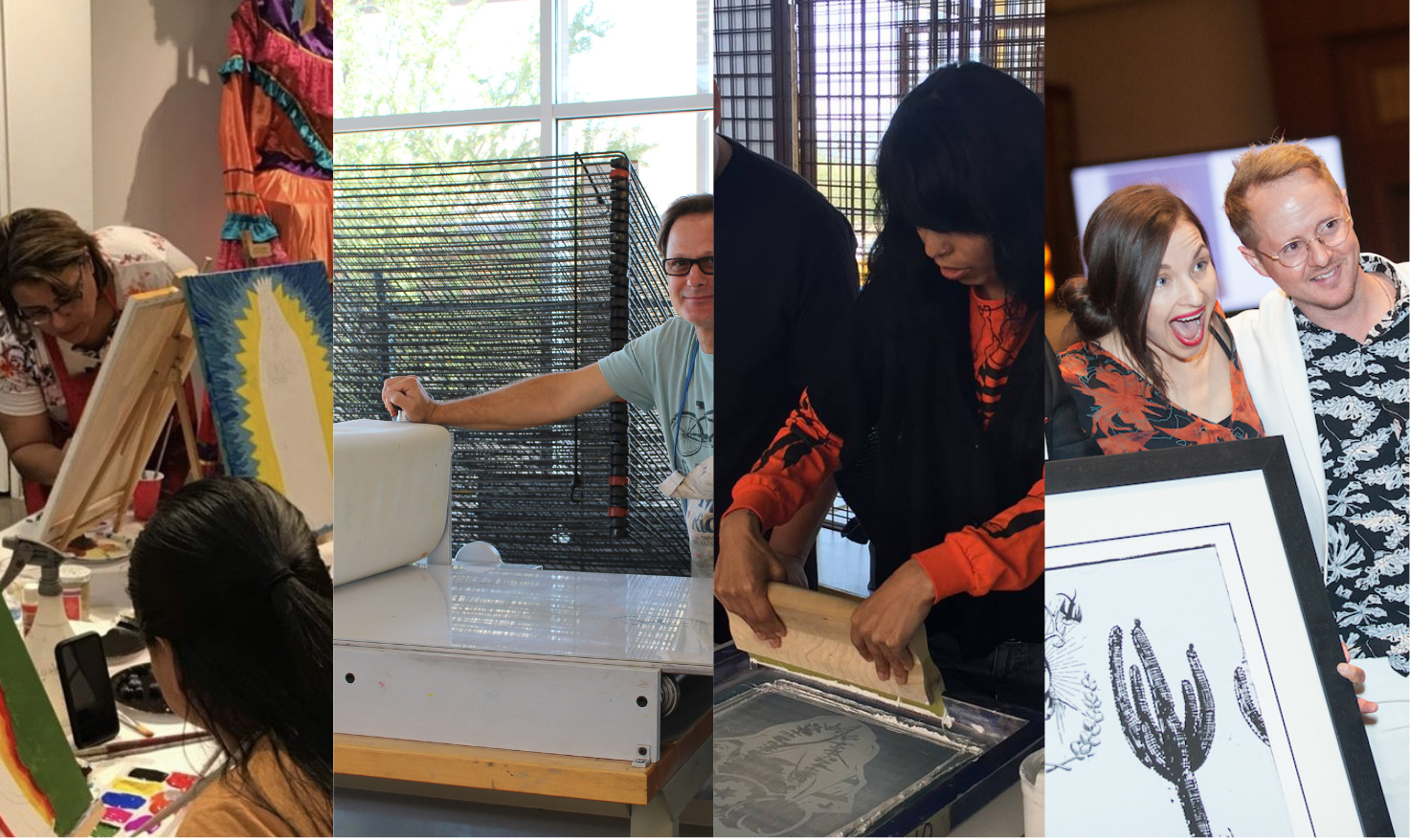In 1975, Xicanindio was founded to be the premiere cultural institution in Arizona serving Latino and Indigenous artists. 46 years later, our name has changed but our mission remains the same...
Our Mission
To promote and sustain Latino and Indigenous culture through art and to serve and advance Latino and Indigenous artists.
Values — Xico bELIEVES…
In the transformative power of art
Culture can be honored and preserved through art
Each artist at every level in their artistic journey has value, merit, and potential
Everyone deserves to know their heritage
Everyone deserves access to the arts
Diversity
Xico's staff and teaching artists are diverse. Included are Latino, Jewish, Caucasian, Black, Native American ethnicities/races, first-generation Americans, heterosexual and LGBTQ sexual orientation/gender identity, and ages ranging from young adults to seniors. Xico's board includes male, female, Latino, Middle Eastern, Asian, heterosexual and LGBTQ+, and ages range from millennial to senior. Xico has three emeritus board members who identify as Latino.
Xico is committed to maintaining an inclusive environment that is welcoming and accepting of people of all races, ages, sex, religions, colors, national origin or ancestry, disability or medical condition, pregnancy, childbirth, marital status or veteran status, sexual orientation, genetic information, or any other status.
Located near downtown Phoenix, Xico's primary focus is the Latinx & Indigenous community whose voices we aspire to amplify through programing and opportunity for growth.
What We Do
Xico serves a broad, ethnically diverse population including emerging and established artists, youth, under-served populations, and art advocates through art-based programming: Community Exhibitions (virtual and in-person), Under-served Youth Programs (Say Yes To The Press), Printmaking Workshops, Professional Development Workshops, Artist-Lead classes, Virtual DIY Tutorials and Artist-in-Residence.
The History of Printmaking in Mexico
Mexico was one of the first countries in the world to establish a critical framework for linking art to the development of productive forces in society at large. It was printmaking that most effectively expressed the social and political concerns of the1900-1950 in Mexico. Prints documented the plight of the oppressed and commemorated the struggles and achievements of social reform.
The use of printed images to document these events, beginning in 1910, the first year of the Mexican Revolution, continued after the Revolution ended in 1920. Prints were produced in Mexico in large numbers during World War II that addressed international concerns,principally the tyranny of fascism and the virtues of socialist ideology. Mexico has the oldest printmaking tradition in Latin America. With the Introduction to lithography to Mexico in the nineteenth century, printmaking and publishing greatly expanded, and artists became recognized for the character of their work.
Jose Guadalupe Posada is often regarded as the father of Mexican Printmaking. His best known prints are of Calaveras published on brightly colored paper as broadsides that address topical issues and current events, love and romance, stories, popular songs,and other themes. Posada demonstrates how effective prints were for creating a visual language that everyone could understand and enjoy. In the early twentieth century,their example had a profound impact on artist who, in response to the turbulent political climate and social unrest, were similarly eager to reach broad audiences.Diego Rivera pioneered a popular style of heroic realism that addressed contemporary political and social concerns in Mexico and in the United States. Throughout his careerRivera made only fourteen prints, most of which were lithographs made in Mexico City.Rivera’s most famous lithograph,Emiliano Zapata and His Horse,has become the best-known of all twentieth-century Mexican prints.
The establishment of the print collective known as the Taller de Gráfica Popular in Mexico City in 1937 best expresses the symbiosis between prints and politics that had developed in Mexico. Its founders, Leopoldo Méndez, Luis Arenal and Pablo O’Higgins,were committed communists who abandoned mural painting to concentrate on printmaking, demonstrating how important prints had become as a vehicle for artistic,social, and political expression.Artists who were involved in the Taller de Gráfica Popular collectives, along with others,also made many prints relating to Mexican heritage,customs and daily life. This aspect of printmaking in Mexico has not received much attention from scholars because of the dominate narrative around prints and the Mexican Revolution.

